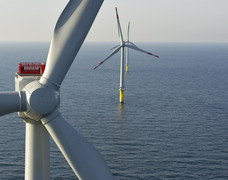The House has voted to pass a partisan, revised version of its farm bill, H.R. 1947, the Federal Agriculture Reform and Risk Management Act of 2013 (FARRM) 216 to 208. The  version does not include food stamp authorization but keeps in tact current agricultural programs. The debate over the bill has been long and drawn out and took up most of yesterday and today before the bill was brought up for vote with pleas from Chairman Frank D. Lucas to pass the bill and go home to their families.
version does not include food stamp authorization but keeps in tact current agricultural programs. The debate over the bill has been long and drawn out and took up most of yesterday and today before the bill was brought up for vote with pleas from Chairman Frank D. Lucas to pass the bill and go home to their families.
The House claims that FARRM helps diversify the nation’s energy supply and creates new economic opportunities in rural America by promoting the development of advanced biofuels and renewable energy. However, the bill eliminates mandatory funding and reauthorizes programs at reduced discretionary funding levels that they say will save taxpayers $500 million. Energy programs affected include: Rural Energy for America (REAP), Biomass Crop Assistance Program (BCAP), Biorefinery Assistance Program (BAP), Biobased Markets Program, and the Biodiesel Fuel Education Program.
In addition, FARRM reauthorizes the Bioenergy Program for Advanced Biofuels, the Repowering Assistance Program, the Biomass Research and Development Program, the Feedstock Flexibility Program, and the Community Wood Energy Program. It repeals or ends authorizations of the Biofuels Infrastructure Study, and the Renewable Fertilizer Study, the Rural Energy Self sufficiency Initiative, and the Forest Biomass for Energy Programs.
 In response to the passage of the bill, Brian Jennings, executive vice president of the American Coalition for Ethanol (ACE) said, “Now that the U.S. House has adopted its version of the Farm Bill, ACE will be working to encourage the House-Senate conference committee to finalize legislation that mirrors the Senate Bill. The Senate version contains support for important Energy Title initiatives, particularly mandatory funding for the Rural Energy for America Program (REAP).”
In response to the passage of the bill, Brian Jennings, executive vice president of the American Coalition for Ethanol (ACE) said, “Now that the U.S. House has adopted its version of the Farm Bill, ACE will be working to encourage the House-Senate conference committee to finalize legislation that mirrors the Senate Bill. The Senate version contains support for important Energy Title initiatives, particularly mandatory funding for the Rural Energy for America Program (REAP).”
Jennings continued, “These REAP funds provide vital cost-share assistance to help petroleum marketers make upgrades or install new equipment at retail stations, ensuring consumers have access to renewable and affordable fuels such as ethanol. We are hopeful Congress enacts a multi-year, comprehensive farm bill that resembles the Senate legislation before the September 30 deadline.”
The Senate version includes a robust portfolio energy program as well as funds the programs. The next step is for the House-Senate conference committee to draft and present a compromised version of the bill.
 The amount of new offshore wind energy installed in Europe during the first half of this year has doubled compared to a year ago, but a lack of future orders is troubling wind energy advocates there. The European Wind Energy Association (EWEA) says 277 new offshore wind turbines, totalling 1,045 megawatts (MW), were connected to the grid during the first six months of 2013, but the group also points to issues with future projects:
The amount of new offshore wind energy installed in Europe during the first half of this year has doubled compared to a year ago, but a lack of future orders is troubling wind energy advocates there. The European Wind Energy Association (EWEA) says 277 new offshore wind turbines, totalling 1,045 megawatts (MW), were connected to the grid during the first six months of 2013, but the group also points to issues with future projects:











